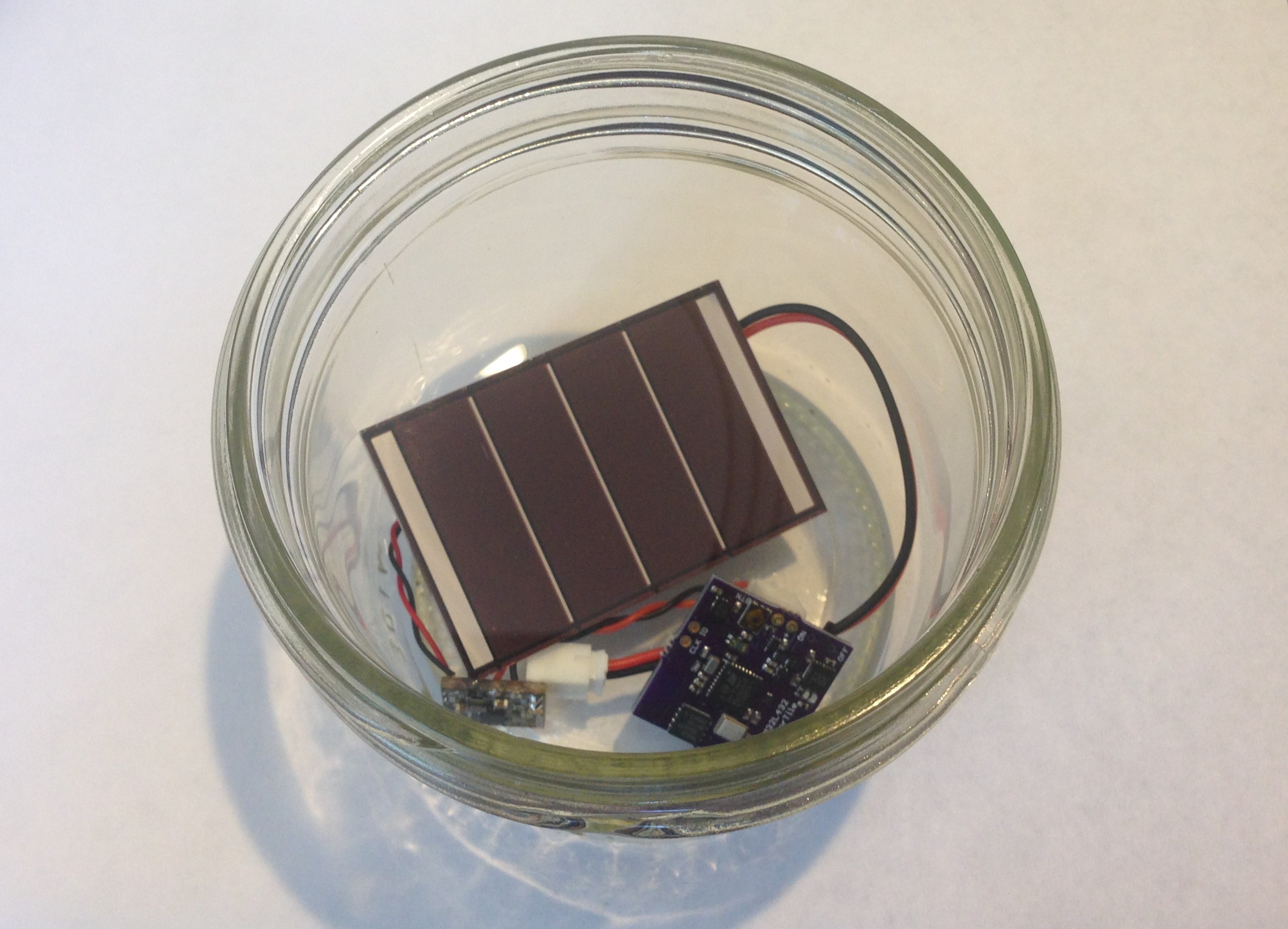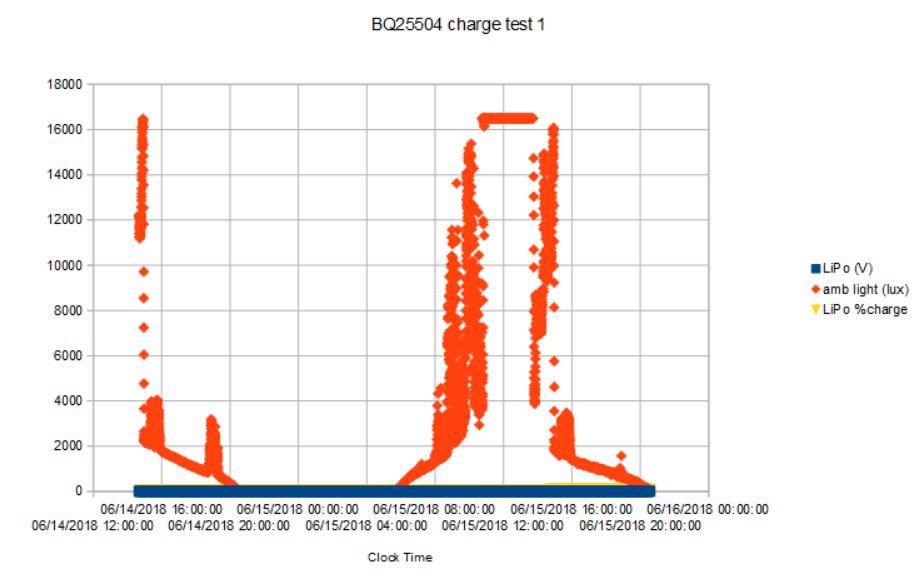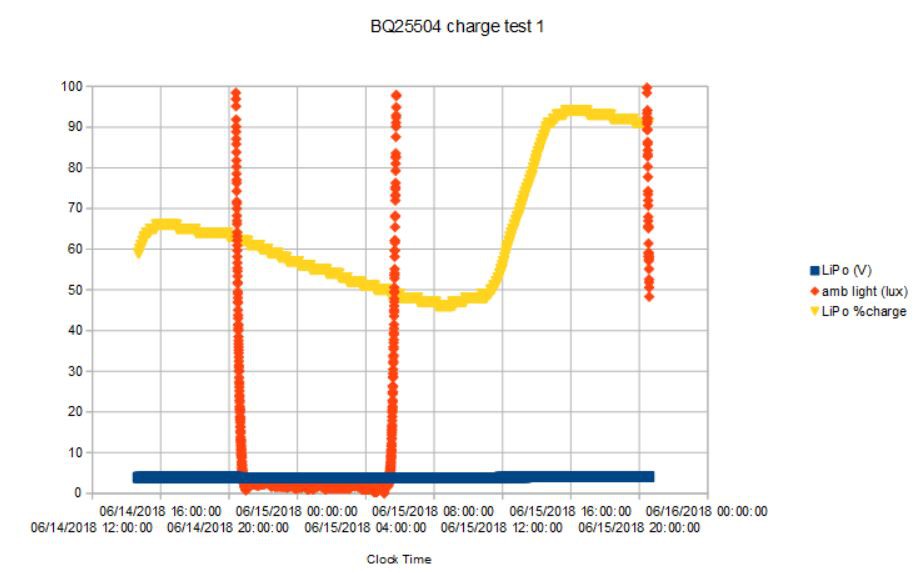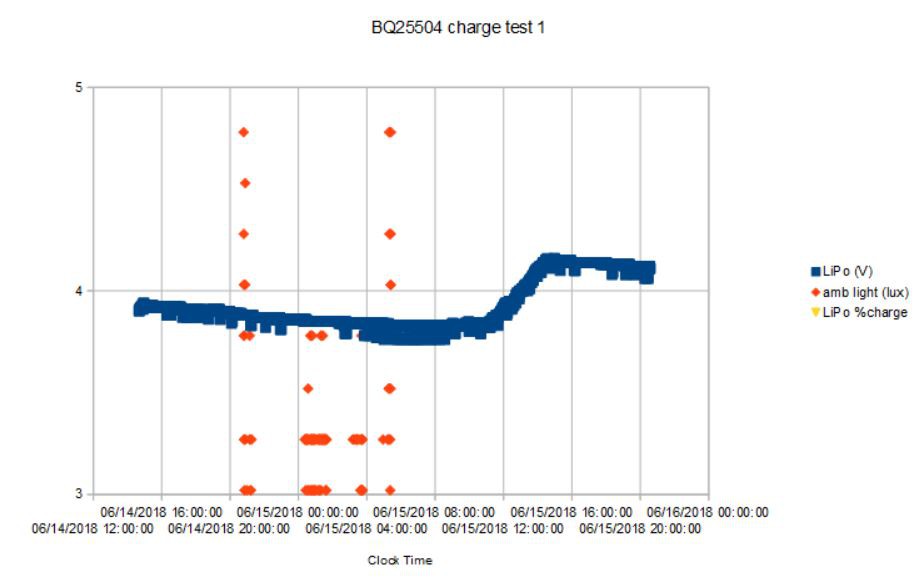16 June 2018
Well, first test because sometime last night (8.34 pm, to be exact) the Sensor Tile stopped working. I know this because that's the last entry in the SPI flash data log. I don't know why. The battery had nearly a full charge (91% at 4.11 V) at the time of stoppage so I assume it was a glitch or that the battery somehow became loose (the JST connector is just pressed into the JTS PTHs on the SensorTile, not soldered) or just one of those things. But this is somewhat rare in my testing to date, but usually I have the devices mounted in some kind of box, not a glass jar as in this case.

Well, I got about 1.5 days worth of data, which is enough to tell that the BQ25504 boards with the new inductor are working well.

First the record of the ambient light in lux measured from the VEML6040. I am using the smallest (40 ms) integration time since the sensor is in direct sunlight and the light pegs the sensor at its maximum output of 16384 lux for several hours per day. I estimate the incident sunlight is ~20 klux for at least four hours (x-axis grid spacing) a day. According to the data sheet, at 50 klux sun light the solar cell should be producing 16.9 mA at 2.2 V, so I am probably getting ~20 mA/50 mA x 16.9 mA ~7 mA per hour as I estimated in my previous experiments.

The charge state of the 105 mAH 1S 3.7 V LiPo battery I used was about 60% at the start of the experiment, ramped up to ~68% with the one or two hours of sun left when I first placed the apparatus on the back deck table and then it fell through the night reaching a low of ~46%. I was able to query the battery voltage and charge level in real time using Adafruit's BLE UART app on my smart device, but nothing beats data recorded at ten second intervals on flash for later detailed analysis!
The data capture a full day's worth of charging; even though the VEML6040 captured sunrise at ~5.45 AM on 6/15 (when the orange amb light line starts moving up, it is not until more or less direct sunlight falls on the solar cell at ~11 AM that charging really gets going. Peak charge is reached at ~4 PM, when the device enters the house shadow (local "sunset"), and then gradually falls until the device (and data recording) stops at 8:34 PM. Peak charge at 94% from minimum of 46% means about half of the battery capacity is added by the charger (roughly 50 mAH) per day. The device uses only ~68% - 46% ~ 22% of battery capacity per day so this set up should last indefinitely as long as there are a few hours of direct sun per day.

The battery voltage responds as one would expect, reaching a minimum of 3.76 V at around 8 AM and peak battery voltage of 4.14 V at 4 PM 6/15.
I will restart the experiment, maybe with the JST connector soldered to the SensorTile this time and see if I can get several days of data.
Overall, I would say the BQ25504 Solar Cell LiPo charger works as advertised, at least with this particular solar cell. For some projects, 50 mAH per day of charging might not be enough, and the other variables including hours of sunlight, cloud cover, container, system device, etc will determine whether this solution will work for any given application.
One thing I am curious about is whether this solution will work for some other method of power harvesting, not a solar cell but maybe thermoelectric or piezoelectric device. The only requirement is a DC voltage > 0.35 V. If I can find a suitable energy transducer, I will give this a try...
 Kris Winer
Kris Winer
Discussions
Become a Hackaday.io Member
Create an account to leave a comment. Already have an account? Log In.